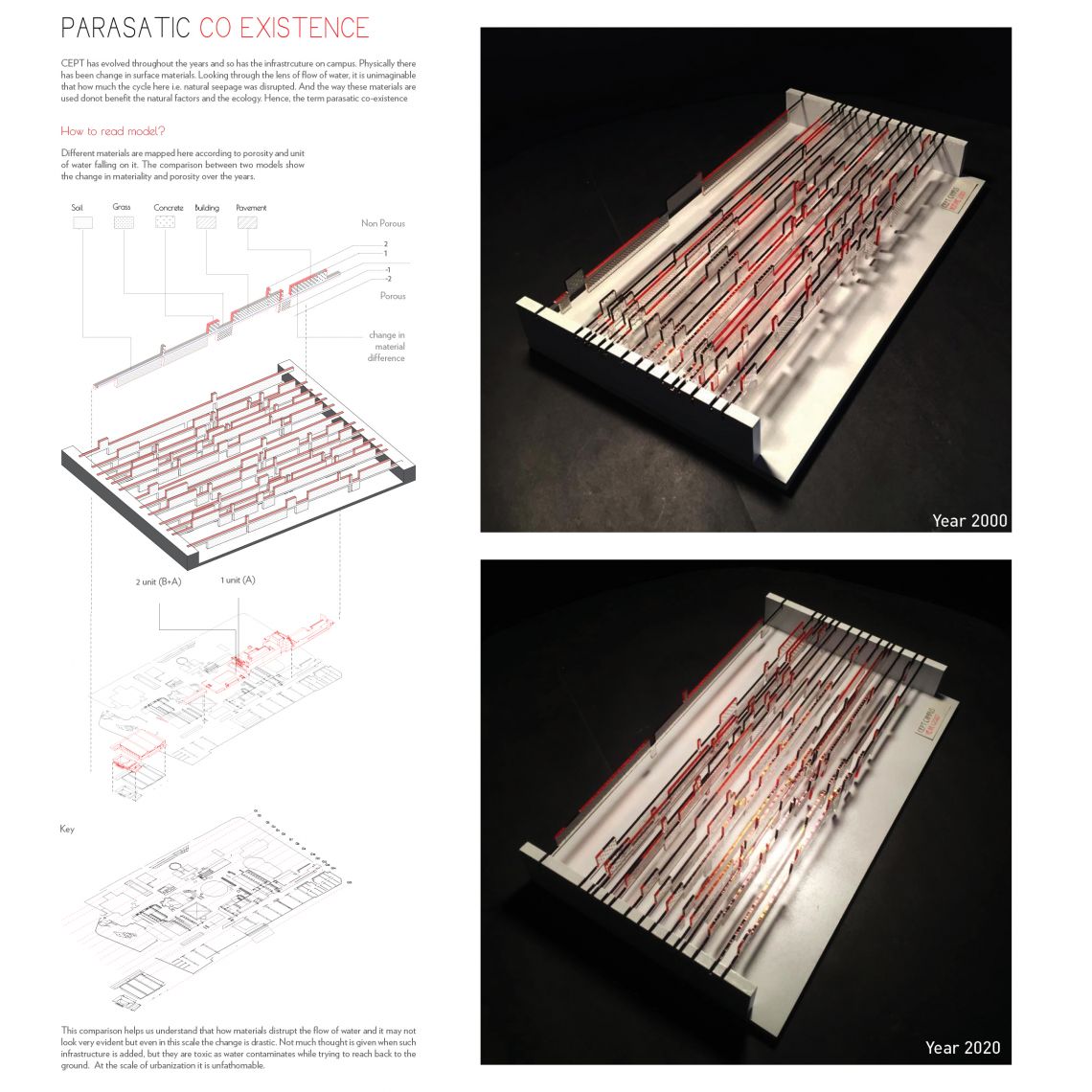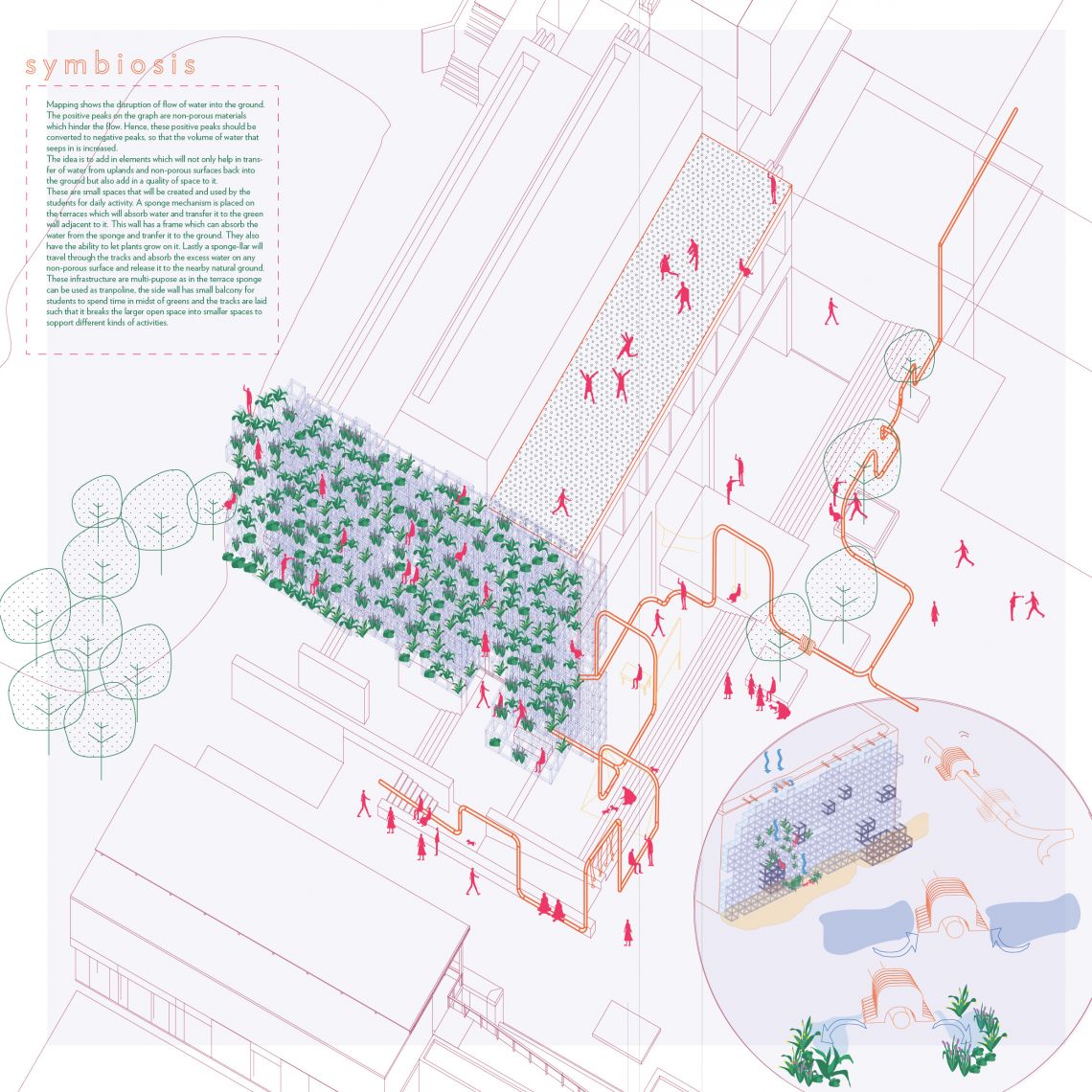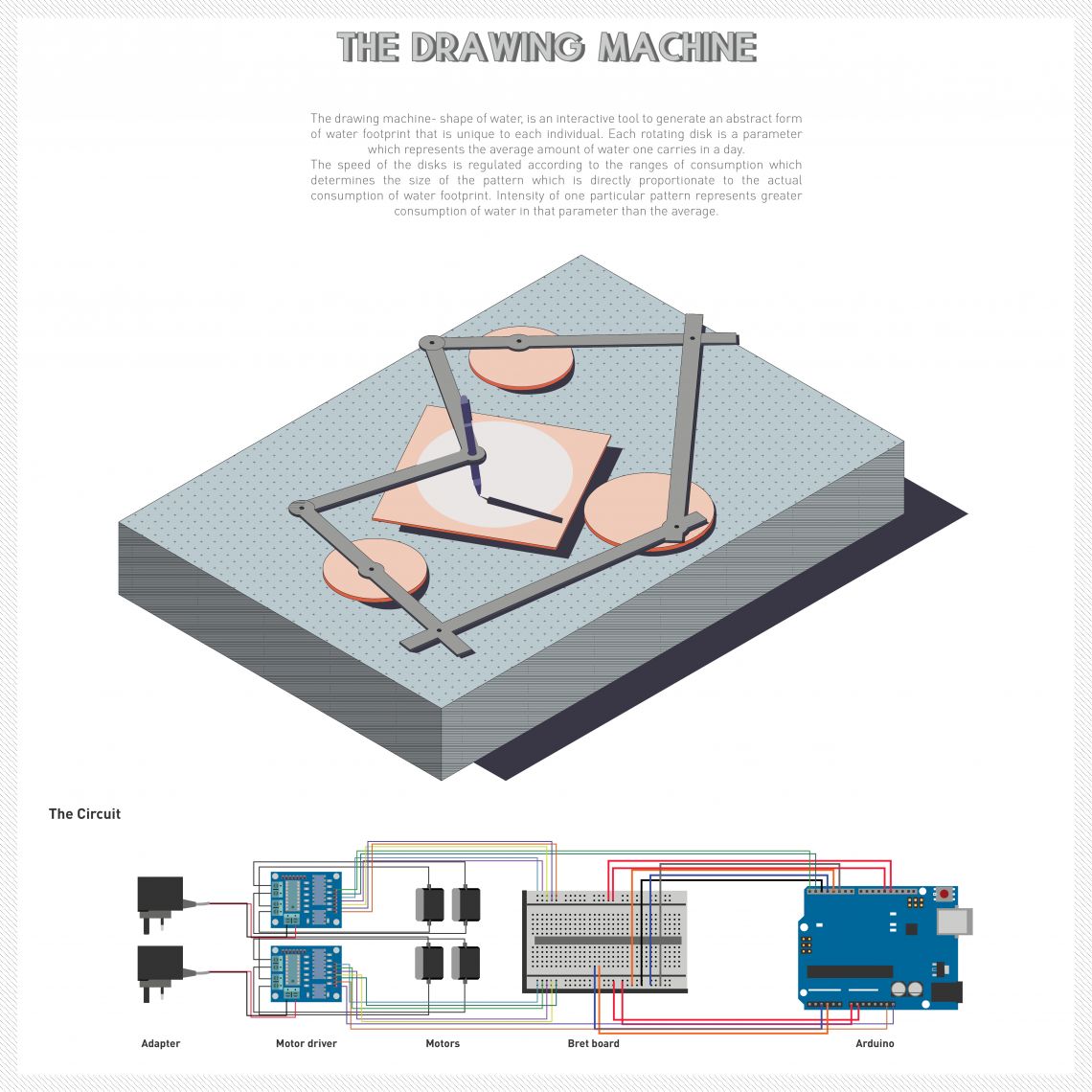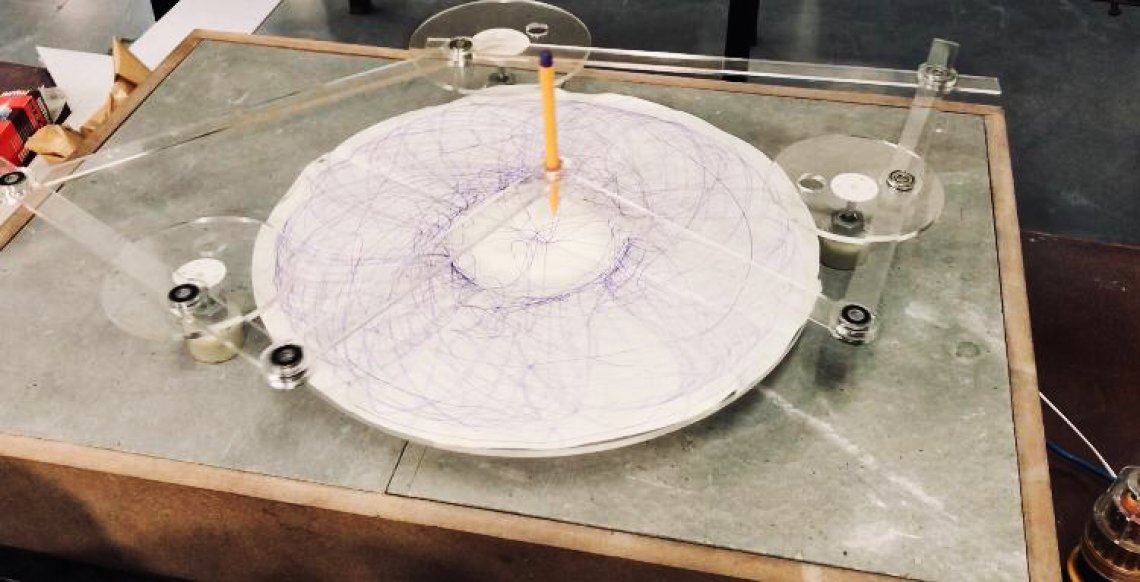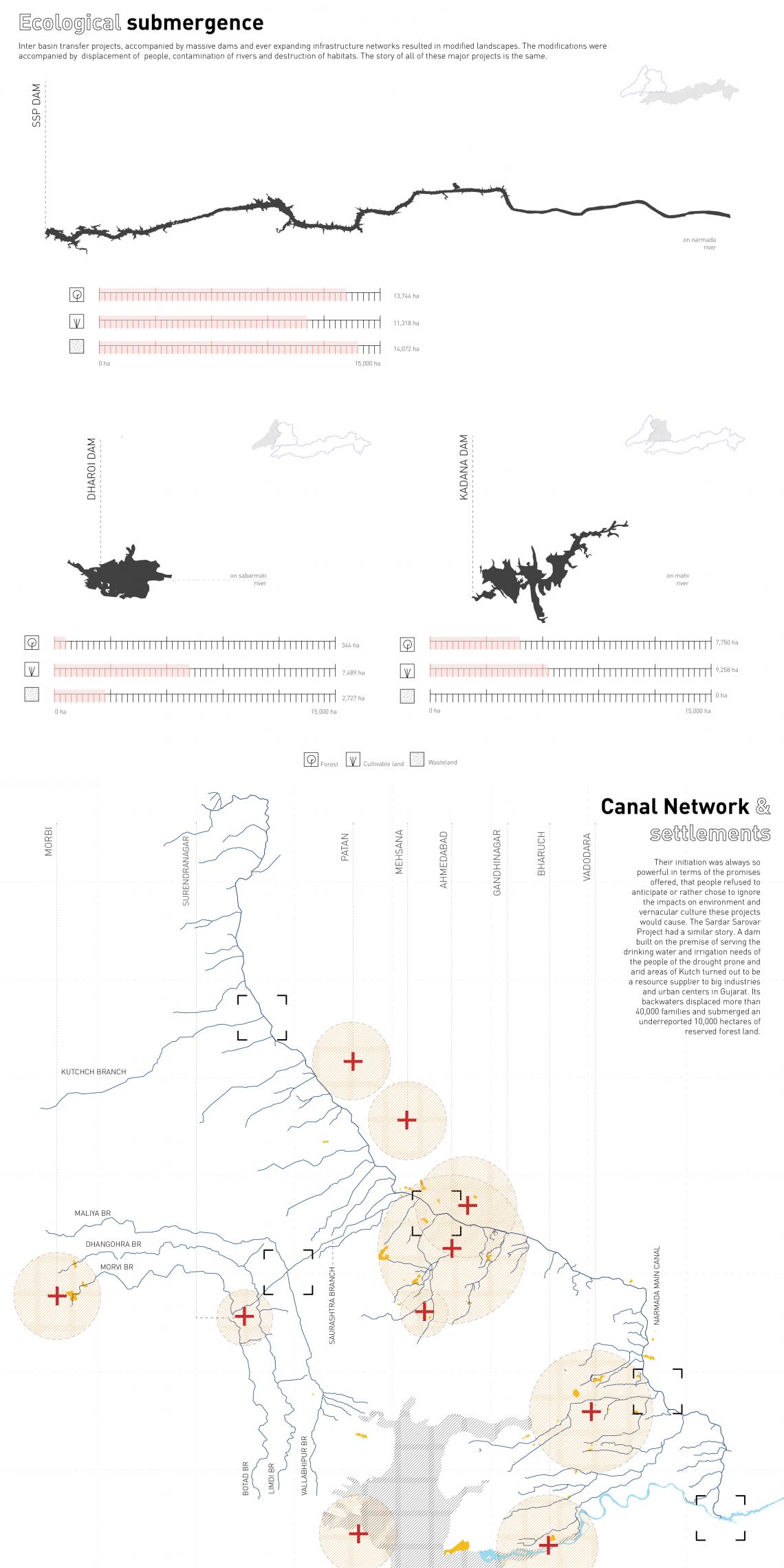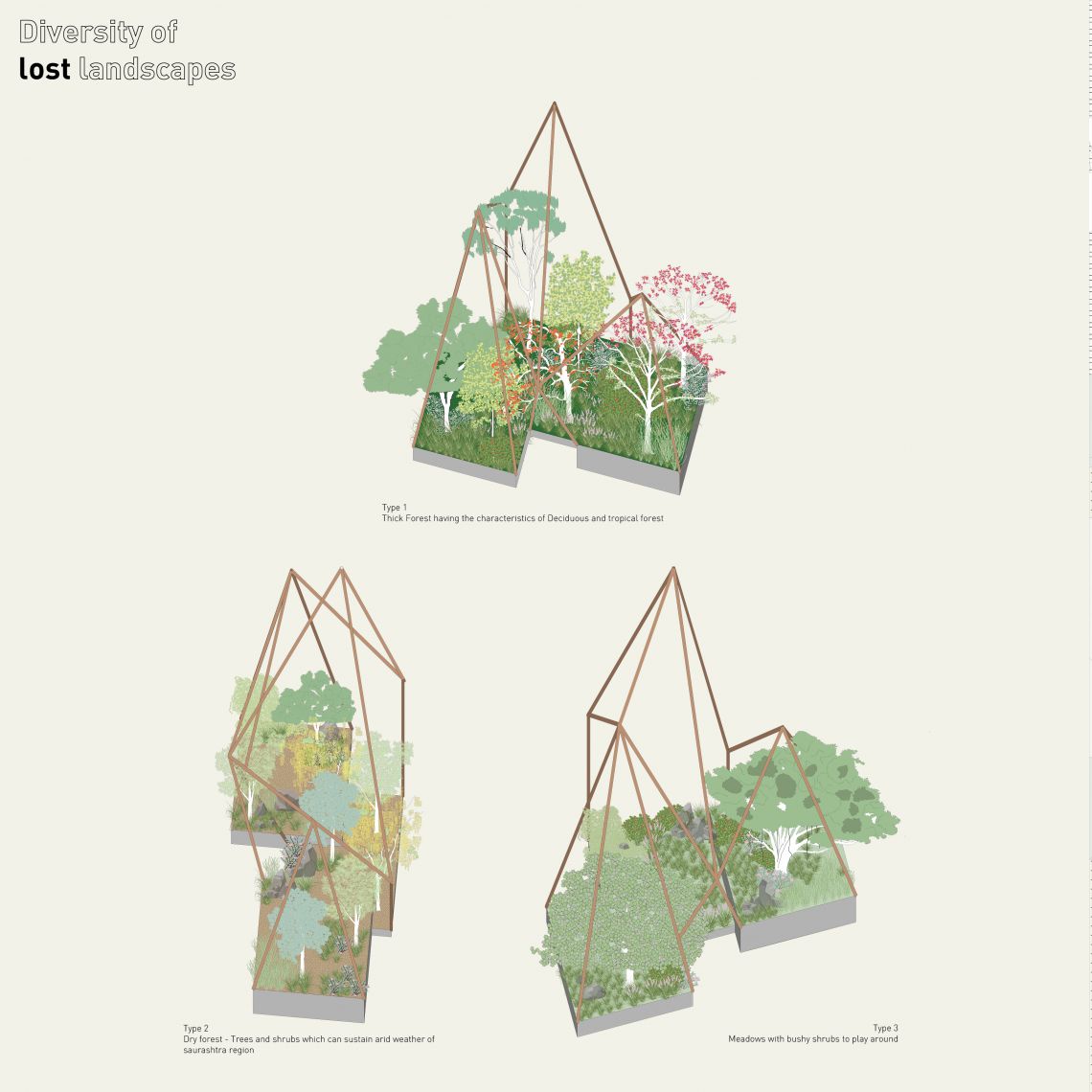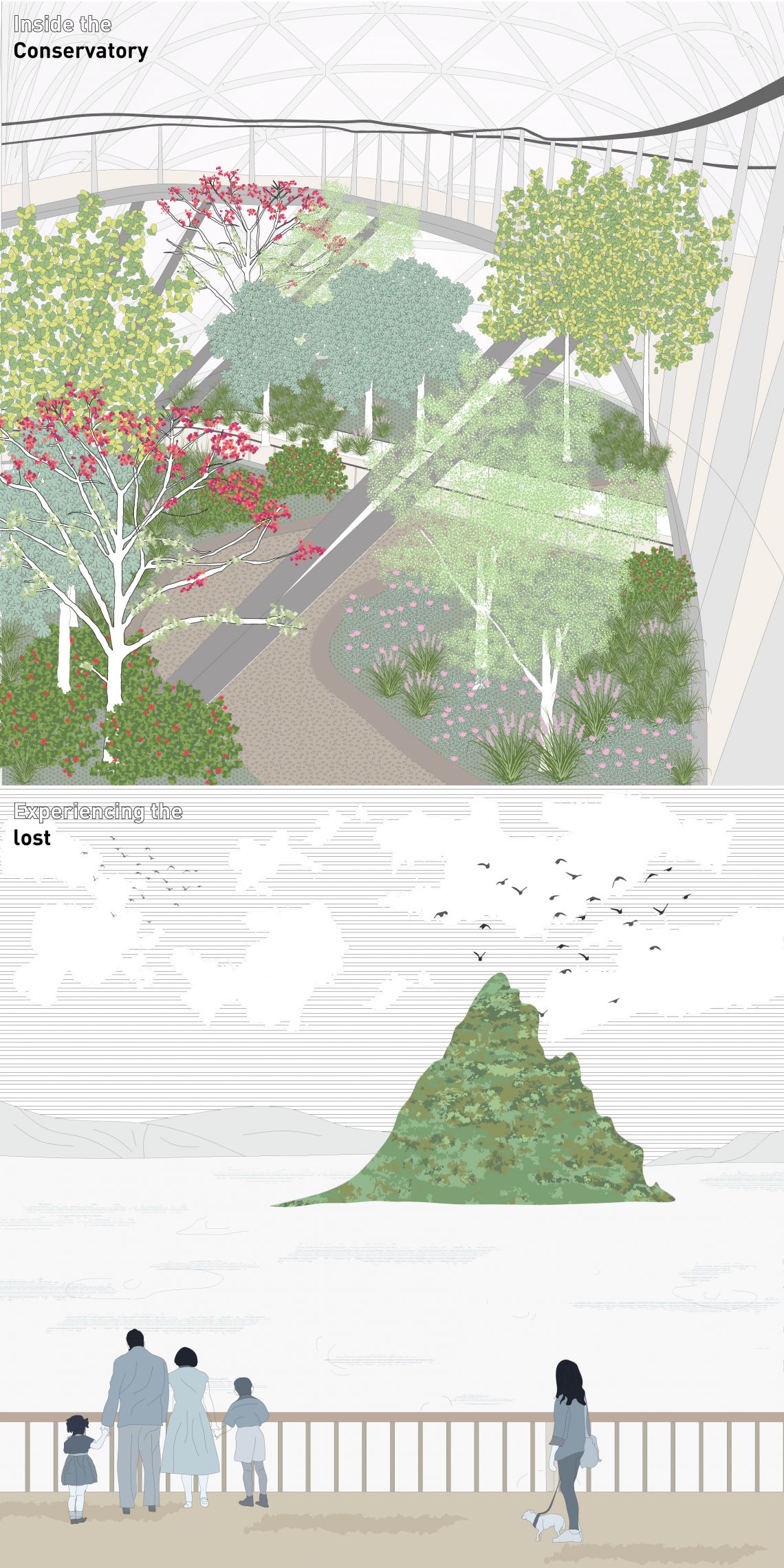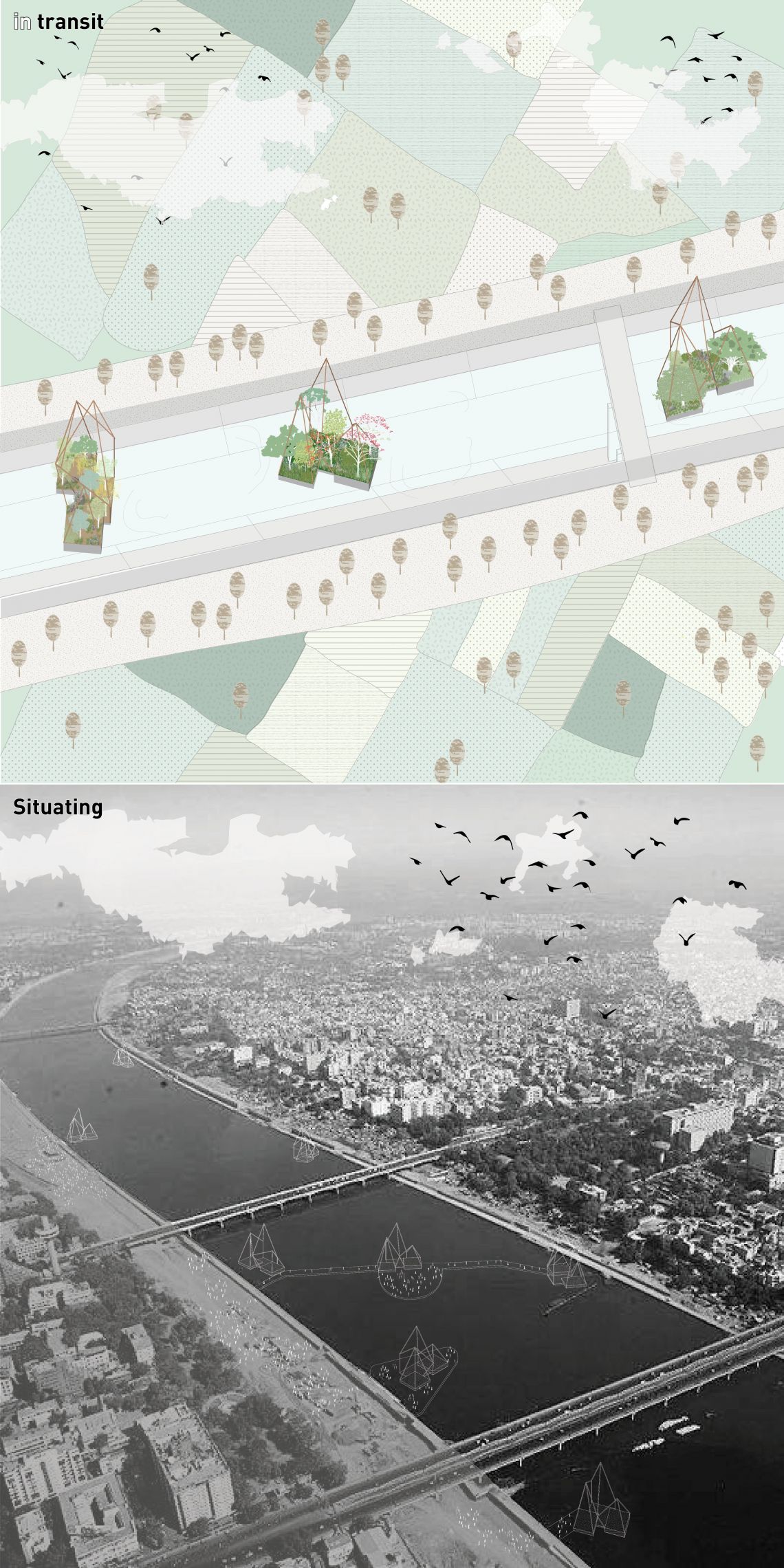Your browser is out-of-date!
For a richer surfing experience on our website, please update your browser. Update my browser now!
For a richer surfing experience on our website, please update your browser. Update my browser now!
//PARASITIC CO-EXISTENCE and Symbiosis is a study of how over the years CEPT has changed physically and its effects on the water seepage into the ground. The idea is to see and compare the surface materials of campus in year 2000 when it was had more natural ground and the water could seep into the ground and stored. However with increase in pavements/non porous materials this natural seepage has been disrupted.////THE SHAPE OF WATER “Water has achieved an invisibility in our lives that is more remarkable given how central it is.” - Charles Fisherman, The Big Thirst. We believe that all water problems are local, but the consequences, the damage and the costs are anything but local. The project aims at taking a step towards comprehensive data collection at city scale as well as spreading awareness among citizens about their impact on the overall consumption of water by generating a unique water footprint for each individual that represents an abstraction of how much water you carry with yourself.////LANDSCAPE IN TRANSIT is a future speculation where due to submergence and increase in dam like infrastructure has resulted into loss of landscape and forest. As resources continued to deplete, the dam and its accompanying infrastructure became defunct. Ironically today, this mechanism of resource extraction and a symbol of environmental destruction and cultural displacement has become an experimental lab for resource conservation and regeneration. Set in this context, In- transit is a fictional tale that visualizes the repurposed Sardar Sarovar dam. The project is inspired by Klaus Littmann’s project ‘For Forest’ an adaptation of the work of Max Peitner. It tries to show dream-like visions that offer a discourse on future habitats reminding us of our past actions. It is an attempt to bring to the forefront a discussion on the impact of large scale development projects. By visualizing familiar landscapes as lost monuments, and situating them in unusual settings the project reinstates that if we take natural systems for granted, the only way we might experience them in the future would be through created sacred exhibits.
